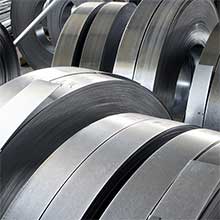
PHYSICAL PROPERTIES
PHASE — Solid
STD ATOMIC WEIGHT — Solid
STD ATOMIC WEIGHT — 92.90638(2) g-mol-1
MELTING TEMPERATURE — 2750 K, 2477° C, 4491° F
BOILING POINT — 5017 K, 4744° C, 8571° F
CRYSTAL STRUCTURE — Body Centered Cubic
ELECTRICAL RESISTIVITY — (0 °C) 152 nΩ·m
THERMAL CONDUCTIVITY — (300 K) 53.7 W·m−1·K−1
THERMAL EXPANSION — 7.3 µm/(m·K)
GENERAL PROPERTIES
SYMBOL — Nb
NUMBER — 41
ELEMENT CATEGORY: — Transition Metals
KEY FACTS
- Discovered in 1801 by Charles Hatchett, an English chemist
- Closely related to tantalum
- Lowest melting point, density, and strength of the refractory metals
- Excellent cold working properties
- Limited corrosion resistance when compared to tantalum
MAJOR APPLICATIONS
- Superconductor wires for MRI applications
- Alloying agents in certain steels
- Chemical process equipment such as heat exchangers
- Fabrication of artificial diamonds
COMMON ALLOYS
- Niobium
- Niobium 1% Zirconium
- Niobium 7.5% Tantalum
- Niobium 47% Titanium
- Niobium 50% Titanium
- Niobium 55% Titanium

